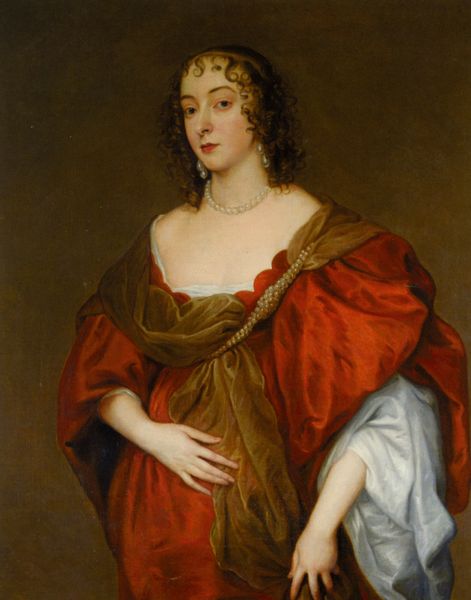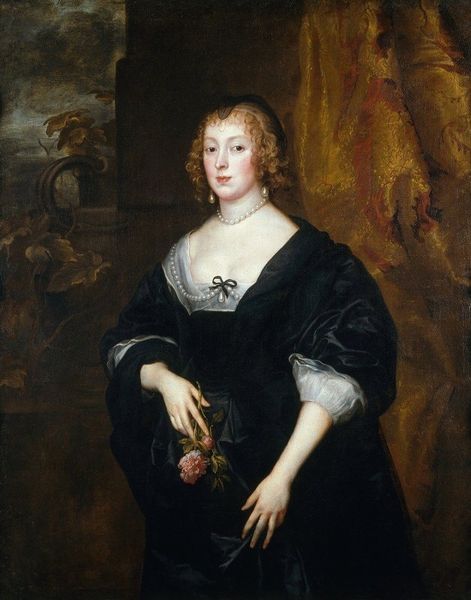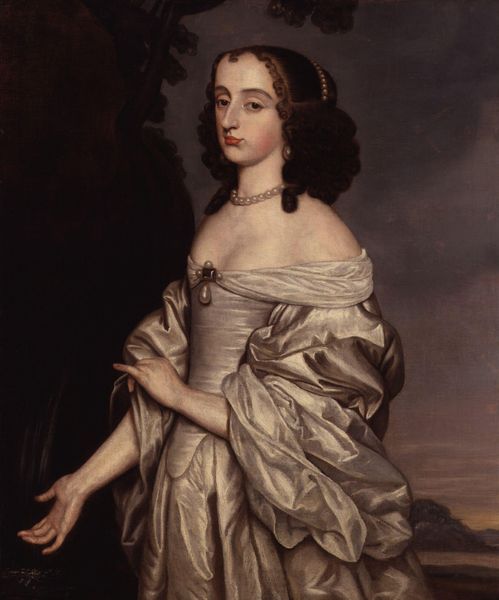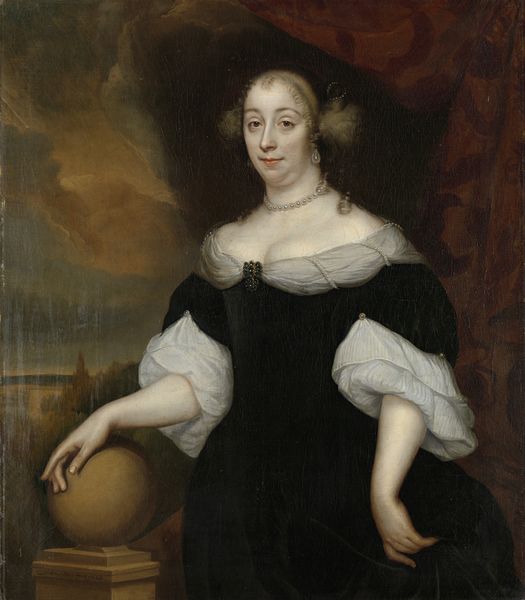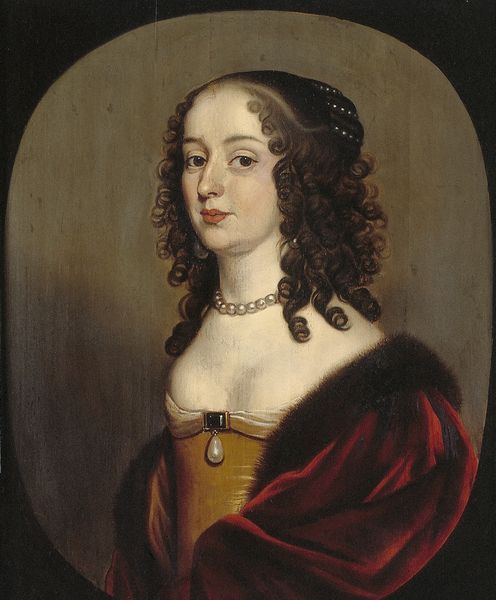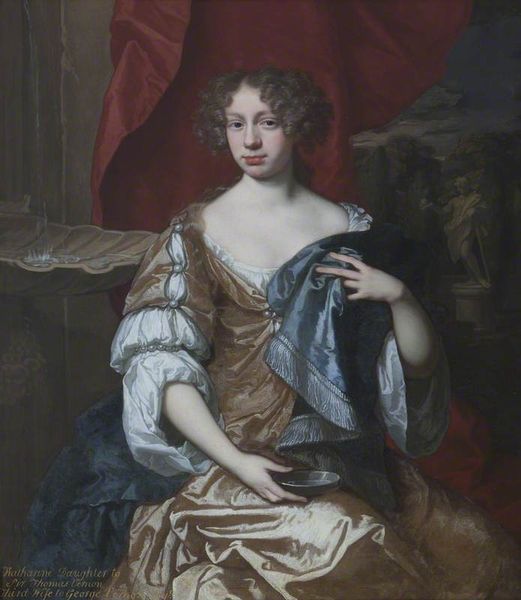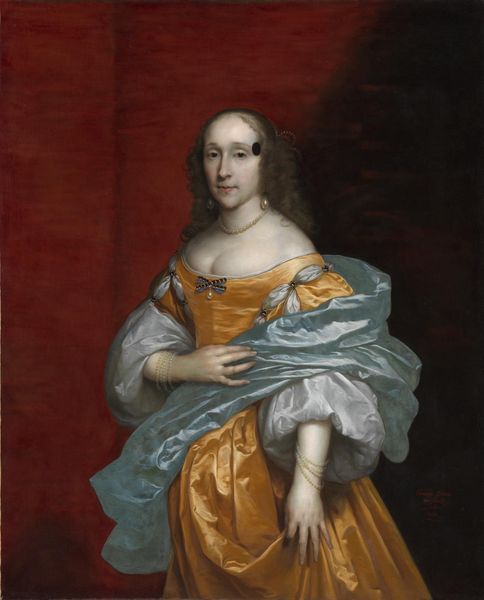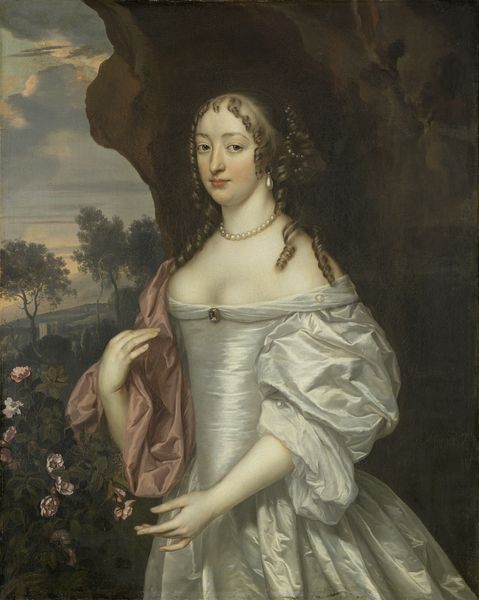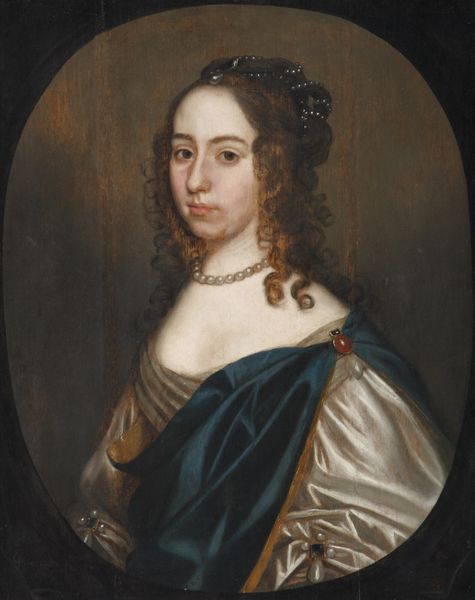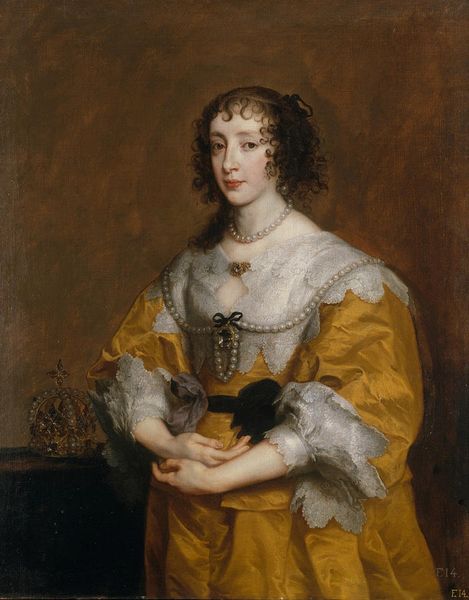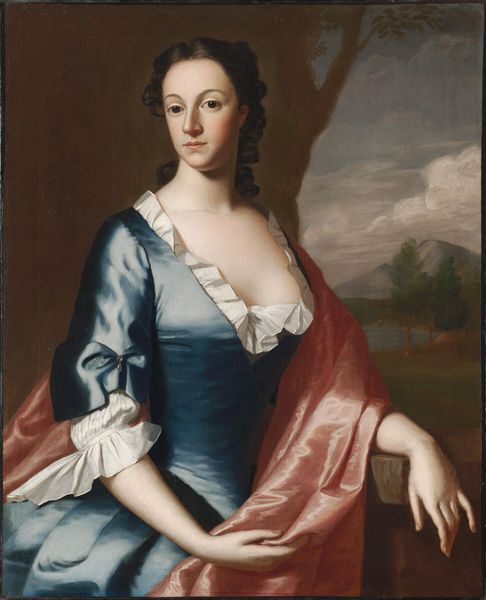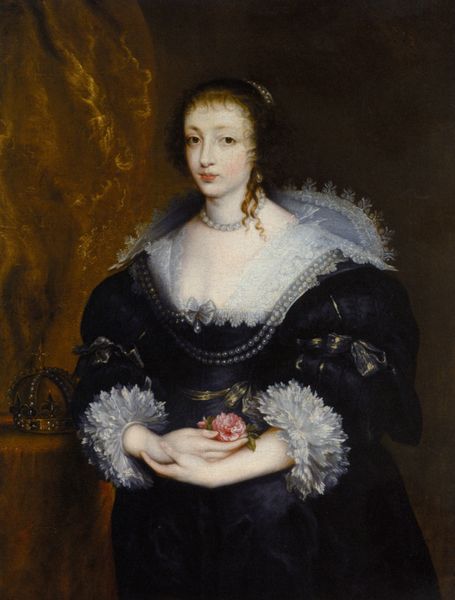
Dimensions: support: 1065 x 833 mm frame: 1274 x 1039 x 85 mm
Copyright: CC-BY-NC-ND 4.0 DEED, Photo: Tate
Editor: Here we have Sir Anthony Van Dyck’s "Portrait of Mary Hill, Lady Killigrew." The folds in that fabric look so rich and heavy. What can you tell us about the materials used and the context in which this was made? Curator: Van Dyck's portraits were essentially luxury goods. Consider the pigments, likely sourced globally, ground by workshop laborers. That shimmering fabric? Its production involved complex trade networks and, potentially, exploited labor. Editor: So, even the creation of the portrait itself was a commodity? Curator: Precisely. Van Dyck wasn't just making art; he was participating in a system of social and economic display, where the means of production become part of the message. Editor: It makes you see the painting with completely new eyes. Thanks for sharing! Curator: My pleasure!
Comments
tate 8 months ago
⋮
http://www.tate.org.uk/art/artworks/van-dyck-portrait-of-mary-hill-lady-killigrew-t07956
Join the conversation
Join millions of artists and users on Artera today and experience the ultimate creative platform.
tate 8 months ago
⋮
Van Dyck depicts Lady Killigrew in a plain dress, without the richly textured lace that was the fashion (and time-consuming to paint). The relaxed ease and grace he gave his sitters were immensely popular with the court elite and had a major impact on later artists in Britain. Van Dyck was born and trained in Antwerp, a major centre for art. He also spent years studying and working in Italy. Out of these influences, he evolved new forms of portraiture. Van Dyck’s portrait of the sitter’s husband is displayed nearby. Gallery label, December 2020
